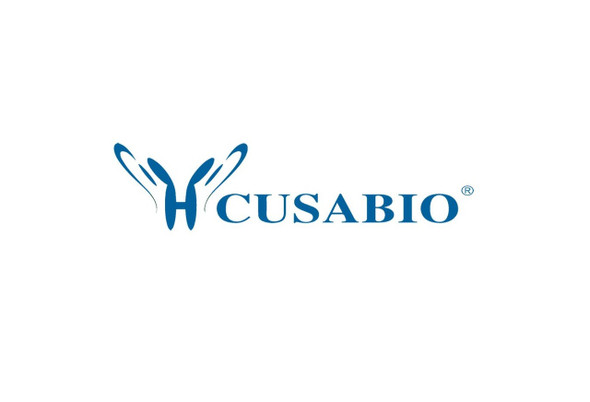Cusabio Active Proteins
Recombinant Human Tumor necrosis factor ligand superfamily member 13B (TNFSF13B), partial (Active) | CSB-AP002191HU
- SKU:
- CSB-AP002191HU
- Availability:
- 5 to 10 Working Days
Description
Recombinant Human Tumor necrosis factor ligand superfamily member 13B (TNFSF13B) ,partial (Active) | CSB-AP002191HU | Cusabio
Protein Description: Partial
Alternative Name (s) : B lymphocyte stimulator, B-cell-activating factor, BAFF, Dendritic cell-derived TNF-like molecule, TNF- and APOL-related leukocyte expressed ligand 1
Gene Names: TNFSF13B,BAFF,BLYS,TALL1,TNFSF20,ZTNF4,UNQ401/PRO738
Research Areas: Cancer
Species: Homo sapiens (Human)
Source: E.Coli
Tag Info: Tag-Free
Expression Region: M+134-285aa
Sequence Info: M+AVQGPEETV TQDCLQLIAD SETPTIQKGS YTFVPWLLSF KRGSALEEKE NKILVKETGY FFIYGQVLYT DKTYAMGHLI QRKKVHVFGD ELSLVTLFRC IQNMPETLPN NSCYSAGIAK LEEGDELQLA IPRENAQISL DGDVTFFGAL KLL
Biological Activity: Fully biologically active when compared to standard. The ED50 as determined by a mouse splenocyte survival assay is 0.5-2 µg/ml.
MW: 17.2 kDa
Purity: >95% as determined by SDS-PAGE and HPLC.
Endotoxin: Less than 1.0 EU/µg as determined by LAL method.
Relevance: Cytokine that binds to TNFRSF13B/TACI and TNFRSF17/BCMA. TNFSF13/APRIL binds to the same 2 receptors. Together, they form a 2 ligands -2 receptors pathway involved in the stimulation of B- and T-cell function and the regulation of humoral immunity. A third B-cell specific BAFF-receptor (BAFFR/BR3) promotes the survival of mature B-cells and the B-cell response. {ECO:0000269|PubMed:10973284}.; Isoform 2 seems to inhibit isoform 1 secretion and bioactivity. {ECO:0000250}.; Isoform 3: Acts as a transcription factor for its own parent gene, in association with NF-kappa-B p50 subunit, at least in autoimmune and proliferative B-cell diseases. The presence of Delta4BAFF is essential for soluble BAFF release by IFNG/IFN-gamma-stimulated monocytes and for B-cell survival. It can directly or indirectly regulate the differential expression of a large number of genes involved in the innate immune response and the regulation of apoptosis. {ECO:0000269|PubMed:10973284}.
PubMed ID: 10331498; 10359578; 10398604; 12867412; 22749832; 12975309; 15057823; 15489334; 10973284; 11853672; 11827482; 11862220
Notes: Repeated freezing and thawing is not recommended. Store working aliquots at 4℃ for up to one week.
Function: Cytokine that binds to TNFRSF13B/TACI and TNFRSF17/BCMA. TNFSF13/APRIL binds to the same 2 receptors. Together, they form a 2 ligands -2 receptors pathway involved in the stimulation of B- and T-cell function and the regulation of humoral immunity. A third B-cell specific BAFF-receptor (BAFFR/BR3) promotes the survival of mature B-cells and the B-cell response.
Involvement in disease:
Subcellular Location: Cell membrane, Single-pass type II membrane protein, SUBCELLULAR LOCATION: Tumor necrosis factor ligand superfamily member 13b, soluble form: Secreted
Protein Families: Tumor necrosis factor family
Tissue Specificity: Abundantly expressed in peripheral blood Leukocytes and is specifically expressed in monocytes and macrophages. Also found in the spleen, lymph node, bone marrow, T-cells and dendritic cells. A lower expression seen in placenta, heart, lung, fetal liver, thymus, and pancreas. Isoform 2 is expressed in many myeloid cell lines.
Paythway: NF-kappaBsignalingpathway
Form: Lyophilized powder
Buffer: Lyophilized from a 0.2 μm filtered concentrated solution in PBS, pH 7.0.
Reconstitution: We recommend that this vial be briefly centrifuged prior to opening to bring the contents to the bottom. Please reconstitute protein in deionized sterile water to a concentration of 0.1-1.0 mg/mL.We recommend to add 5-50% of glycerol (final concentration) and aliquot for long-term storage at -20℃/-80℃. Our default final concentration of glycerol is 50%. Customers could use it as reference.
Uniprot ID: Q9Y275
Uniprot Entry Name: TN13B_HUMAN
HGNC Database Link: HGNC
UniGene Database Link: UniGene
KEGG Database Link: KEGG
STRING Database Link: STRING
OMIM Database Link: OMIM









